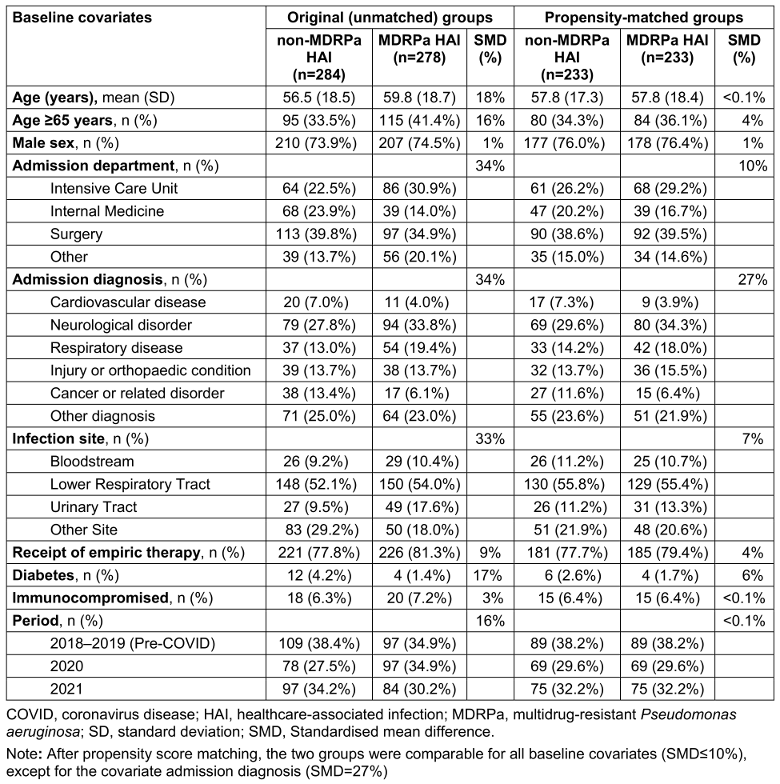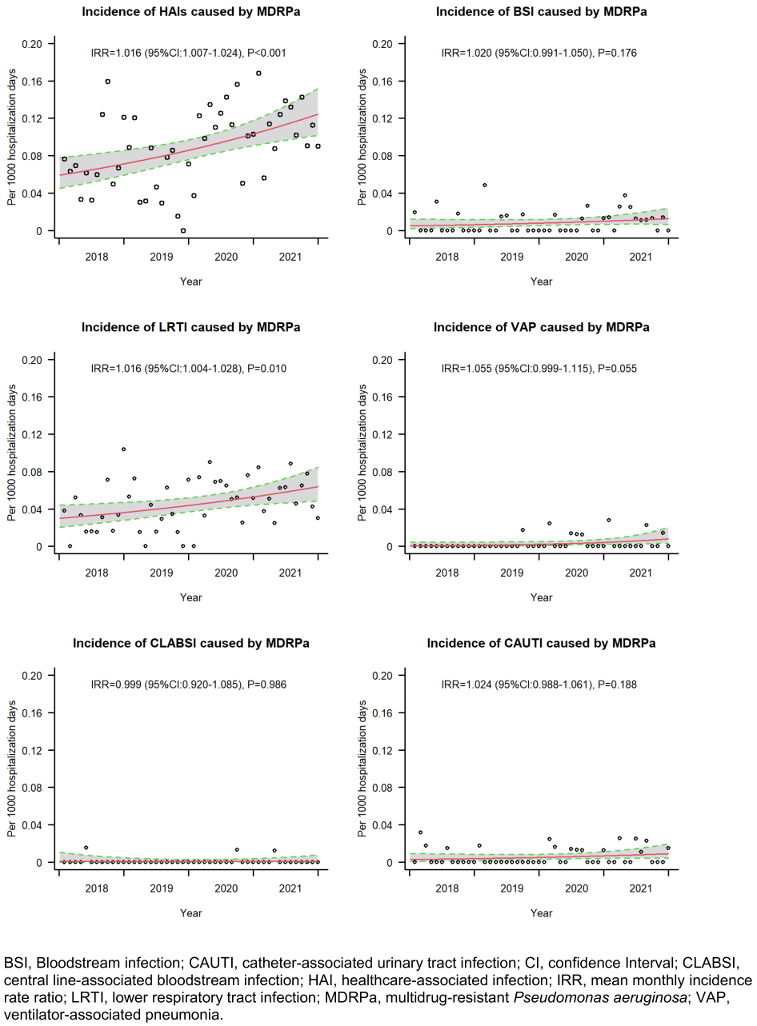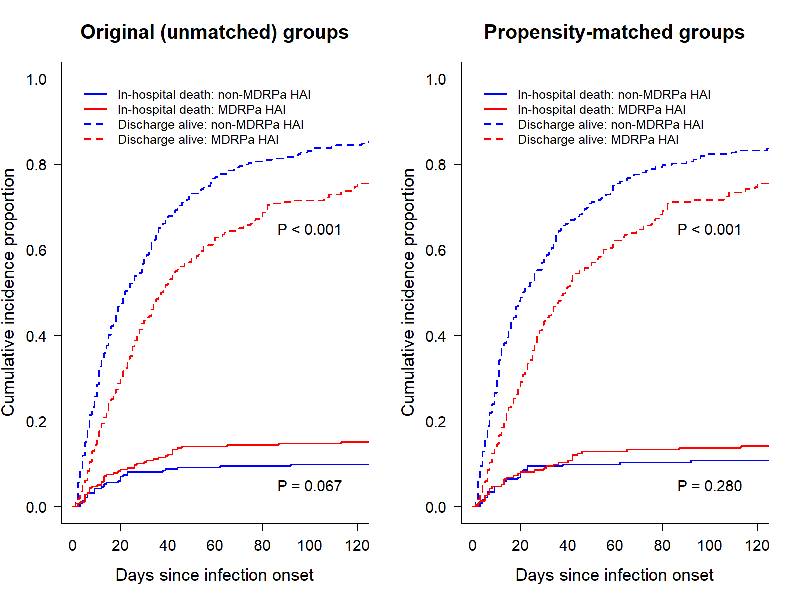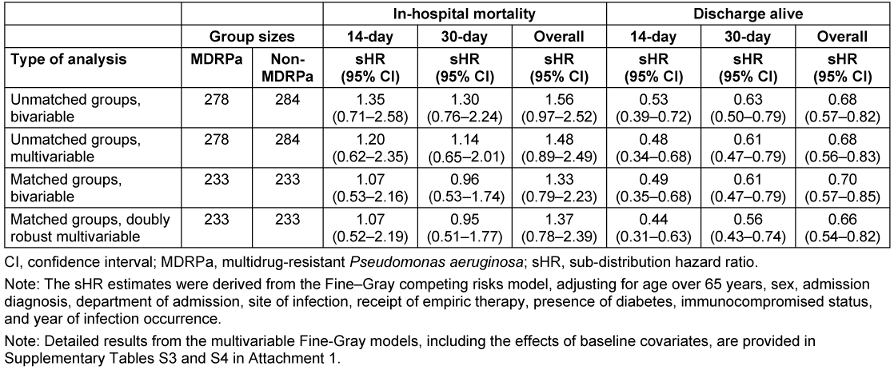In-hospital mortality from healthcare-associated infection by multidrug-resistant Pseudomonas aeruginosa: a competing risks analysis of a 4-year propensity-matched cohort study in southern China
Our latest research article was just published in GMS Hygiene and Infection Control (published by the German Society of General and Hospital Hygiene) on November 21, 2025.
In-hospital mortality from healthcare-associated infection by multidrug-resistant Pseudomonas aeruginosa: a competing risks analysis of a 4-year propensity-matched cohort study in southern China
by
Mouqing Zhou, Evangelos I. Kritsotakis, Baohua Xu, Zhusheng Guo, Yongfeng Zeng, Bin Zhou, Ralph Brinks, Jiancong Wang
Open Access to the full paper is available via:
- Publisher's site
- PubMed (PMID: tbc)
- PMC (PMCID: tbc)
Abstract
Background: Healthcare-associated infections (HAIs) caused by multidrug-resistant Pseudomonas aeruginosa (MDRPa) pose enormous challenges in healthcare. We examined the incidence and relative mortality rates of patients with MDRPa HAI compared to non-MDRPa HAI in southern China.
Methods: A hospital-wide longitudinal cohort study was conducted using prospectively collected surveillance data from 2018 to 2021. Poisson regression was applied to estimate incidence rate ratios (IRRs). Propensity-score matching and competing risks regression analysis (Fine-Gray model) were employed to estimate subdistribution hazard ratios (sHRs) for in-hospital mortality comparing MDRPa to non-MDRPa infections.
Results: Among 562 patients studied (mean age 58 years, 74% male, in-hospital mortality 13.7%), 278 (49%) had an MDRPa HAI and 284 (51%) a non-MDRPa HAI. The incidence rate of MDRPa HAIs increased over time (mean monthly IRR: 1.016, 95% CI: 1.007–1.024). No significant difference in 14-day in-hospital mortality between MDRPa and non-MDRPa HAIs were detected in the propensity-matched doubly-robust analysis (adjusted sHR: 1.07, 95% CI: 0.52–2.19). However, MDRPa HAI was associated with a lower probability of 14-day discharge alive (adjusted sHR: 0.44, 95% CI: 0.31–0.63), resulting in longer hospital stays.
Conclusions: The study provided real-world evidence of the clinical burden of MDRPa HAIs in China, highlighting their rising incidence and direct effect on prolonging hospitalisation. The findings underscore the need for antimicrobial stewardship interventions to ensure timely de-escalation and optimised antibiotic therapy.
Keywords: healthcare-associated infections, multidrug-resistant Pseudomonas aeruginosa, in-hospital mortality, discharge alive, competing risk analysis, antimicrobial stewardship, incidence density, China, Dongguan

Table 1: Baseline characteristics of the original and propensity-matched groups of patients infected with P. aeruginosa by multidrug resistance status

Figure 1: Incidence rate trends of healthcare-associated infection by multidrug-resistant P. aeruginosa, 2018–2021

Figure 2: Univariate cumulative function curves showing the probability of each event (in-hospital mortality and discharge alive) over time for MDRPa HAI and non-MDRPa HAI, in both original (unmatched) and propensity-matched groups.

Table 2: Estimated effects of the multidrug resistance status in P. aeruginosa infection on patient outcomes
